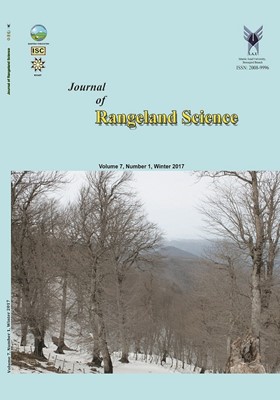Ecological Restoration, Global Challenges, Social Aspects and Environmental Benefits
محورهای موضوعی : Ecology, Autecology and Synecology
1 - BM.Sc. Student, Department of Rangeland Management, Young Researchers Club, Broujerd Branch, Islamic Azad University, Broujerd, Iran
کلید واژه: Ecology, Rangeland, Restoration,
چکیده مقاله :
This book consists of 14 chapters covering important aspects in regards to various terrestrial ecosystems, wetlands, river systems, mine site rehabilitation, marsh ecology and heavy metals pollution. Also aims to fill some of the information gaps in ecological restoration, particularly in under-researched ecosystems around the world. Restoration ecology emerged as a separate field in ecology in the 1980s. It is the scientific study supporting the practice of ecological restoration, which is the practice of renewing degraded, damaged, or destroyed ecosystems and habitats in the environment by active human intervention and action. Ecological restoration is a valuable endeavor that has proven very difficult to define. The term indicates that degraded and destroyed natural systems will be re-established to sites where they once existed. As a discipline Restoration ecology has attracted many adherents and spawned numerous books, research papers and scientific journals. The Society for Ecological Restoration is an international group which foster philosophy and practice and promote the concepts and precepts. Ecological restoration means different things to different people. This Section begins with an examination of the terminology associated with Ecological restoration and defines how the subject will be dealt with in this book. A commonly accepted definition is "return of an ecosystem to a close approximation of its condition prior to disturbance." The term restoration means the re-establishment of predisturbance functions and related physical, chemical and biological characteristics. Restoration is a holistic process not achieved through the isolated manipulation of individual elements. The holistic nature of restoration, including the reintroduction of animals, needs to be emphasized. Merely recreating a form without the functions, or the functions in an artificial configuration bearing little resemblance to a natural form, does not constitute restoration. The objective is to emulate a natural, self-regulating system that is integrated ecologically with landscape in which it occurs.
Ecological Restoration, Global Challenges, Social Aspects and Environmental Benefits
Ecological Restoration, Global Challenges, Social Aspects and Environmental Benefits
Ecological Restoration, Global Challenges, Social Aspects and Environmental Benefits


